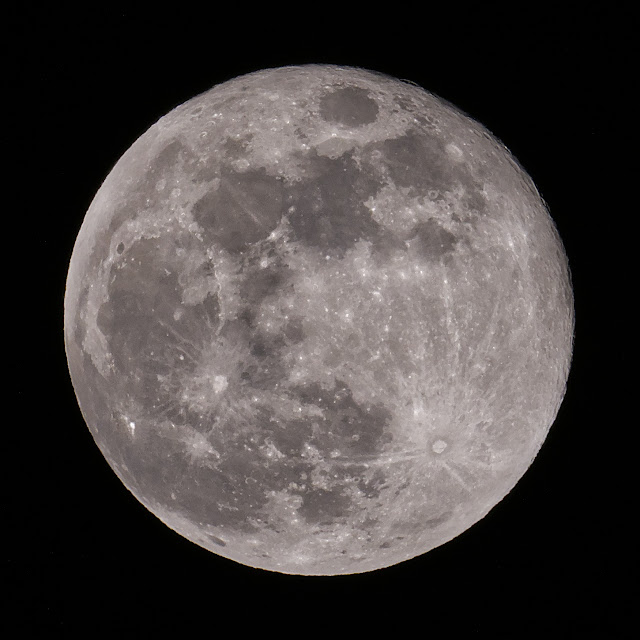Yesterday (12 Feb) was the February full moon, traditionally known as the "Snow Moon". The clear sky provided an opportunity for a fun experiment: measure the distance to the moon.
The idea is simple. Take a picture of the rising moon, and with the same equipment take another picture near midnight. The moon will appear bigger at midnight because we are then closer by some fraction (depends on latitude) of the earth's radius. If you know the radius of the earth, then the ratio of the two moon sizes and some simple math gives the distance to the moon. The size of the earth was first measured in 240 BC by Eratosthenes, to an accuracy better than 1%.
The equipment used was an Astro-Tech AT72EDII f/6 refractor and field flattener with an Olympus E-M5iii camera.
 |
| The Snow Moon rising over the Sangre de Cristo mountain ridgeline. |
 |
| It's hard to avoid utility lines when you live in the city. |
 |
| Color balance adjusted to remove atmospheric color. |
 |
| Approaching midnight (11:15 pm) |
The moon near midnight was about 8 ± 1 pixels wider (1.4%) than the moon as it rose above the distant hills. Taking into account the latitude of Santa Fe (35.7 deg) only, and ignoring the declination of the moon (12.3 deg), the derived geocentric distance is L = 234,900 mi (378,00 km). The ephemeris distance extracted from SkySafari was 242,028 mi (389,508 km). This simple measurement therefore agrees with the known distance to within 3% (but with 13% uncertainty).
This technique could be improved by using a longer focal length scope to increase the pixel difference between the rising and transiting images. Stacking images of the moon would also average out the blurring caused by atmospheric turbulence, particularly near the horizon. But that's a lot more work, so yeah, I'm not going to do that.
No comments:
Post a Comment
Comments are moderated.